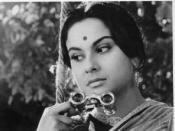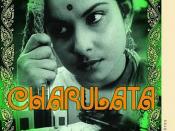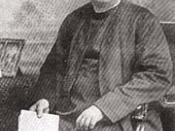Satyajit Ray's film Charulata involves a highly dramatic and multi-layered plot. However, the visual shots are kept simple and Ray is able to create an effective balance. Ray adeptly uses Charulata to illustrate the emergence of the "modern woman". In the film, there is a reference to a popular Bengali author, Bankim. In Bankim's text "Woman: Old and New", he reveals that the new woman should be modern in a traditional way. Charulata equally embodies both these qualities.
The film is set during the peak of the Bengal Renaissance and British influence can be seen frequently. It is displayed in Charulata and Bhupati's furniture, clothing, literature, and politics. Charulata and Bhupati are of the upper class and are wealthy enough to live in a lavishly decorated house. Due to their wealth, they are able to have servants attend to the maintenance of the house. Bhupati runs his own printing press and is constantly engrossed in the publication of his political newspaper.
With the servants running the house and her husband hard at work, Charulata is left to her own devices.
Her life is very monotonous. In the beginning of the film, Charulata tells Brajo (a servant of the house), "It's 4:00. Bring tea to the office." In the following scene, we see Charulata giving the servant the exact same orders. Through dialogue, Ray is adept in revealing the habitual and dull life of Charulata. Charulata assumes the traditional role of the "woman" in various ways. She is reserved and respectful towards her husband, she sews, and keeps a watch over the house. However, it is apparent that Charulata's interests go beyond that of the traditional woman. She spends a lot of her time reading and the audience learns that she is also a writer, which is not...


